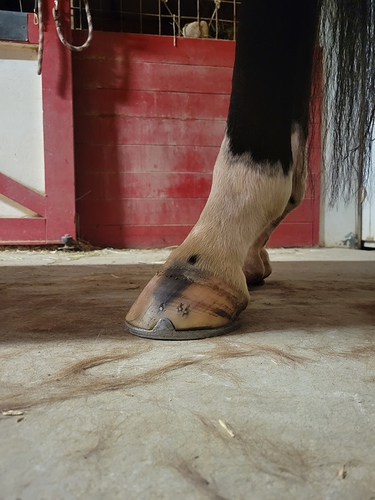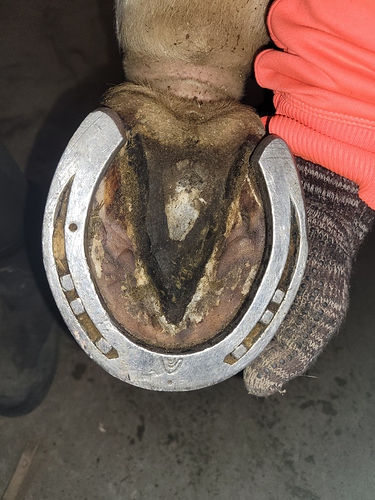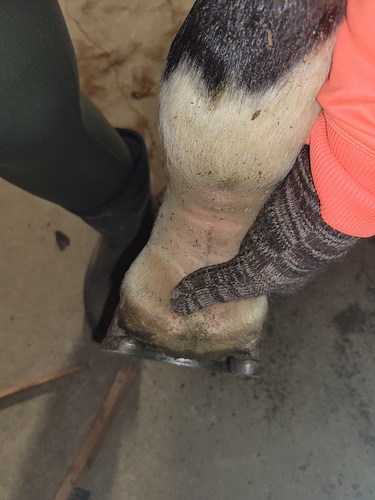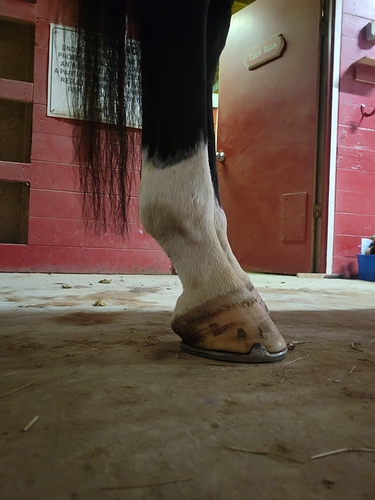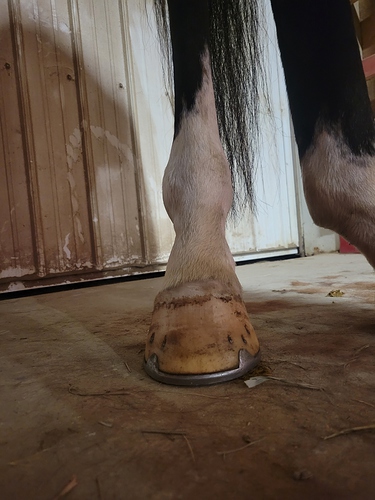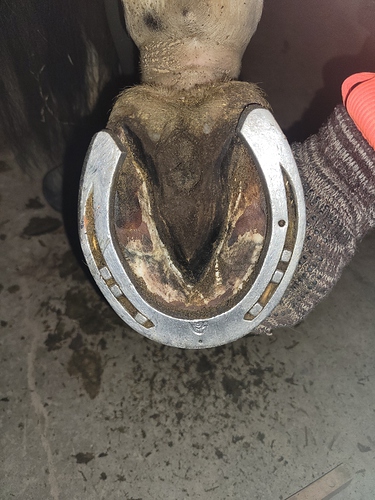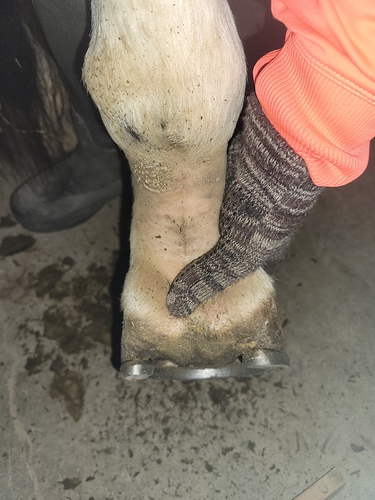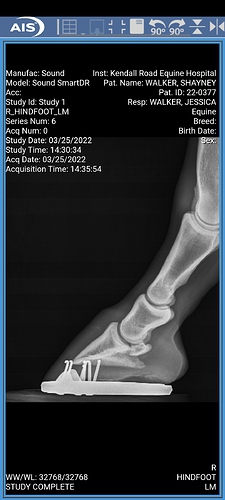My young mare was at the clinic for an unrelated reason - while she was sedated I opportunistically took profile xrays of her hinds, on a hunch that she had NPA.
Below are the xrays and photos of her feet, along with video of her moving (excuse any audio, I had a side convo about soup going on). I had suggested frog support pads to my farrier last time he was out, as her hind frogs have always appeared slightly prolapsed to me. I am not sure what other options there are, so I’m asking for the COTH collective wisdom to educate me.
Note - she goes completely barefoot in the winter, and is sound like that. She infact moves better and interferes less when barefoot, in my opinion.
LEFT:
RIGHT:
Movement videos:


